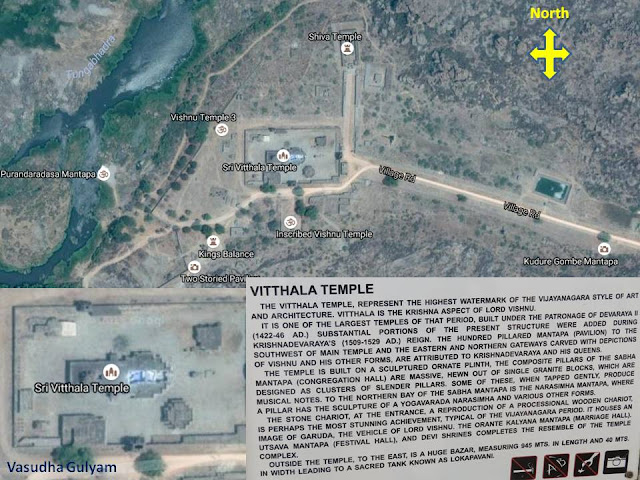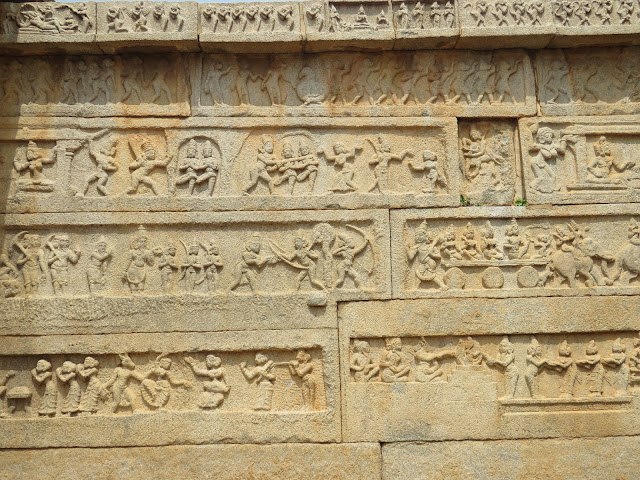Planning a trip to Corbett National Park('Corbett') takes a little planning ahead. As there are limited entry permits to enter the safari zones.
The first Asian national park, established in 1936, Corbett today is spread across 3 districts of Uttarakhand (Pauri, Nainital and Almora). Popular for being home to Bengal Tigers, it is also home to Leopards, Jackals, Gharials, Cobras...as well as Elephants, a variety of Deer and other mammals as also around 550 species of winged beauties.
 |
| A Sambar Deer in the company of Spotted Deer in the Dhela zone of Corbett |
There is more than enough content online around the 'best zones', 'best time', 'how to reach' and so on...so leaving out all of that...here are my thoughts...
For Safaris in Corbett entry permits need to be booked in advance (online on http://corbettonline.uk.gov.in/), jeeps (Rs 1,500 for a single safari) and guides (Rs 500 for one safari) hired for the session - there are morning and evening safaris. Overnight accommodation can also be booked in the same way.
Dhikala is the most popular zone, but done in a Canter, which creates enough noise for humans caught unawares to take to their heels, am not sure how a predator would still stick around close enough for the canter riders to have a glimpse at them. The grass munching animals seem not to mind the noise as much, not sure why. Canter ride is the only way someone not staying in the forest guest houses can do the safari. Else, book accommodation in advance(on same website), hire a 'gypsy' jeep for the duration of stay (around Rs 7,000 for 2 days), stay in the heart of Corbett, in Dhikala and leisurely take in the sounds and sights of the forest.
Most of the photos posted here have been clicked by my husband, Madhan Sundar G. I can't thank him enough for relieving me of handling the camera and so leaving me to make full use of the binoculars which I love infinitely more than the camera.
 |
| A herd of Spotted Deer by the Ramganga reservoir in the grassland of Dhikala zone, Corbett |
 |
| View of the Ramganga reservoir from the Dhikala Tourist Complex, Corbett |
 |
| A rain-fed river in Dhikala zone of Corbett in the early part of the day and the promise of warmth in the hills beyond |
 |
| Elephants having their breakfast in the grasslands of Dhikala zone, Corbett |
 |
| A rain-fed river in Dhikala zone of Corbett, clicked on the return canter ride |
 |
| Spotted Deer breakfasting in Dhikala zone of Corbett |
 |
| Pugmarks of a tiger in Dhikala Zone, Corbett |
A Sambar Deer in Dhikala Zone of Corbett. Watch the ears take in sounds from all around.
A flock of Plum headed Parakeets feasting in the morning in Dhela Zone of Corbett
 |
| Sunrise in Dhela zone of Corbett |
 |
| The vast grasslands in Dhela zone of Corbett |
 |
| A Jackal looking at us and yet not making eye contact...Dhela zone of Corbett |
 |
| Hog Deer, Bijlani Zone of Corbett |
 |
| A Langur grooming session in progress in the evening in Bijlani zone of Corbett |
Bijlani Zone of Corbett
 |
| Birds of Corbett National Park |
 |
| Wetland birds in/around Corbett National Park |
Though the tiger remained elusive on our outings in 3 zones, there was something special in each of the safari. In Dhela, my favourite, saw herds of sprinting Spotted Deer, a Jackal couple who walked right past us, a feasting flock of Plum-headed and Ashy-headed parakeets were the highlights. In Dhikela, the Spotted Deer herd by the reservoir against the backdrop of the forested hills and the waters of the Ramganga was an amazing sight, a slice of heaven. The flock of Scarlet Minivets by the tourist complex was good enough to make us skip breakfast and watch them instead. In Bijlani, sighting the endangered Hog Deer and being at the receiving end of a typical cold hard stare of a Black Shouldered Kite was exciting, and finally a Langur sitting in the middle of the road, who was worried about his tail being run over was a memorable end to our wonderful trip to Corbett. These were just the extra specials, we spotted many a Sambar Deer, Spotted Deer, Elephants, a very shy Wild Boar, Peafowls and many birds.
What really was interesting to me was how the animals completely ignored our presence, which gives me hope that we are probably not doing something that's totally wrong in terms of the kind of visitors, the number of visitors, the duration of visits or perhaps they have been taunted and hunted for far too long during the previous century(even by Jim Corbett himself) that mere presence is something they have learnt to live with.
In Uttarakhand, as well in Corbett, animals' patience is stretched to its limit, especially that of Leopards and Elephants due to habitat loss and fragmentation. Do your bit to not to test their patience further. Holiday responsibly - respect their space when in forest, don't opt for Elephant safari(especially the private ones-they are just an endless demand and supply game for Elephants for just a couple of hours of joy ride for you, don't use bottled water(there's no need for it) or polythene.
Enjoy the silence of the forest, the chatter of the birds, the soothing greenery, the majestic scenery and chance will bring animals and birds in your path, perhaps even a Tiger.
 |
| Nainital |
When in Corbett, taking a day off to go to nearby places is the norm and there's a lot of places to choose from being at the foothills of Himalayas.
- Garjia Matha Temple on the bank of river Kosi-while there look for Ibisbills, the winter residents.
- Kosi Barrage, Ramnagar-hosts a lot of wintering birds
- Kalagarh dam-the Ramganga river dam is a birder's paradise
- Cobett Falls-A nice falls no more than 10 feet high, it opens at 9AM, if that is an impediment to starting early to reaching someplace, drop the falls.
- Corbett Museum at his Kaladhungi house, where his family spent the winters away from cold Nainital.
- Nainital(6,837 feet ASL)- the Naina(eye) shaped natural spring lake, Naina devi Temple, Buckingham palace modeled 1899 completed Raj Bhavan, a few high rises around-most easily reachable amongst them is the Snowview peak(take a cable car ride to see the Nandadevi range in clear skies of winter months), St John in the Wilderness church with its stained glasses.
- Kilbury and pangot-Bird watchers' paradise
- Lake towns of Khurpatal(get to see a birds' eye view of this on the way to Nainital), Bhimtal, Sattal, Nakuchiyatal all at varying distance from Nainital. Apparently Nainital lake is the most beautiful.
- Ramgarh-with its apple orchards
- Muktheshwar-Lord Shiva's temple and beautiful views of Himalayas.


































































